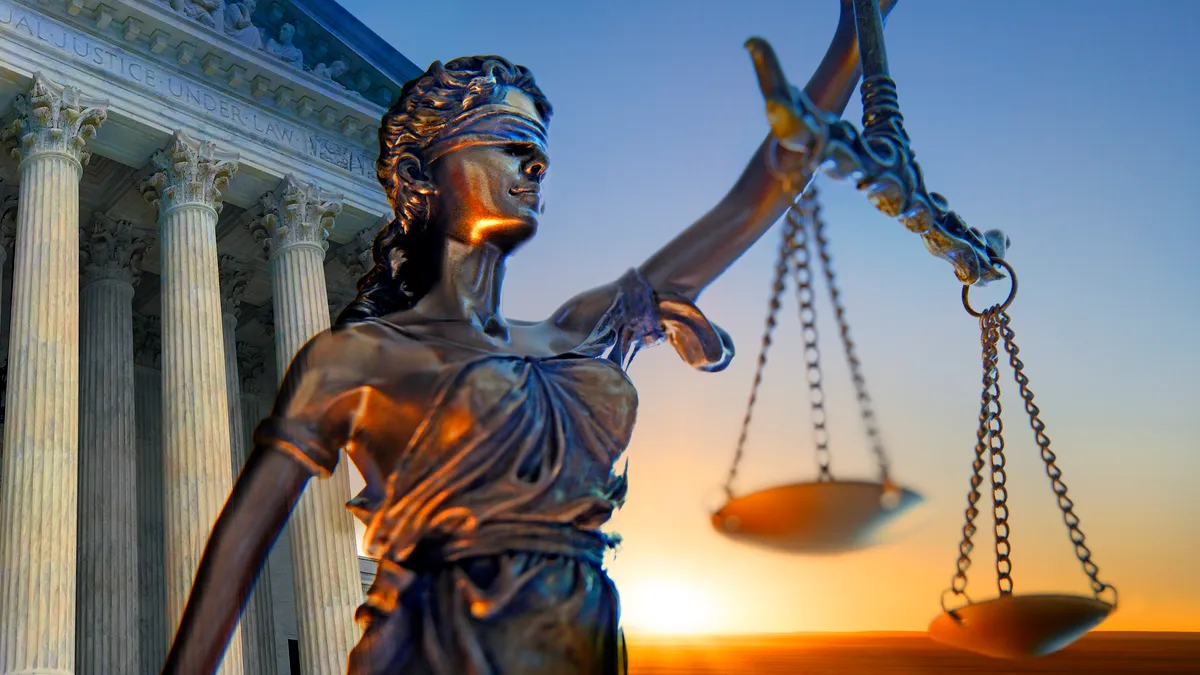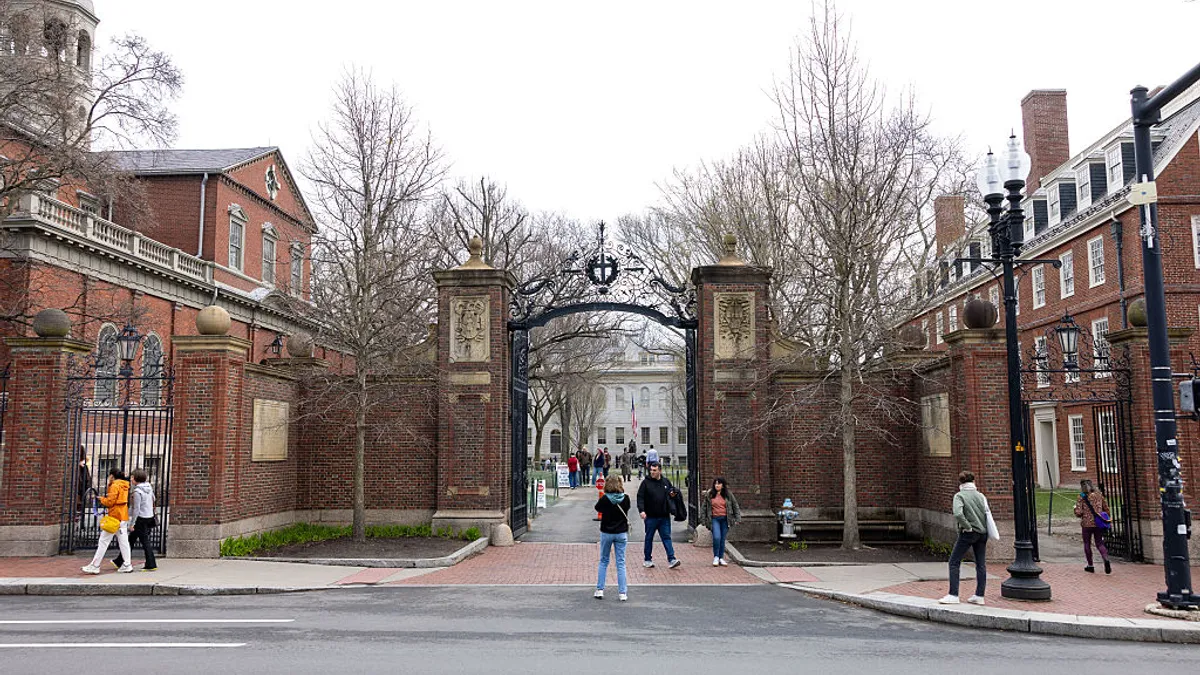The higher education world continues to closely watch a case before the U.S. Supreme Court that could overturn race-conscious college admissions.
Affirmative action proponents remain concerned the high court could ban the practice, as the justices' political makeup has swung to the right with former President Donald Trump’s three judicial appointments. And in at least one past legal challenge, it was a surprise the Supreme Court preserved affirmative action.
The current case challenges admissions policies at Harvard University and the University of North Carolina at Chapel Hill. It’s being brought by Students for Fair Admissions, a prominent conservative legal group.
Recently, dozens of court briefs were filed in favor of doing away with race-conscious admissions practices. Specifically they support reversing Grutter v. Bollinger, the landmark 2003 case that allowed the University of Michigan Law School to use race as one factor in its admissions process. Court precedents only allow race to be used as a narrowly tailored admissions data point considered along with a host of other factors.
The briefs were drafted by the likes of conservative Congressional representatives, think tanks and state leaders. Institutions and higher ed organizations that support affirmative action are expected to submit similar briefs in about a month.
Below, we drill down into the arguments in one of the anti-affirmative action briefs, filed by a coalition of 19 state Republican attorneys general led by Oklahoma.
Argument: Colleges in states that have blocked affirmative action have no problem creating diverse classes
The attorneys general cite data they say shows colleges in states that have dropped affirmative action have no trouble developing diverse student classes.
Oklahoma in 2012 voted to throw out affirmative action in hiring and education. The states contend this had little effect on the share of racial minority students enrolling in the University of Oklahoma.
In 2012, the share of first-year African American students at the U of Oklahoma was more than 6% — this changed very little seven years later. The share of Hispanic first-year students jumped from under 9% in 2012 to almost 12% in 2019.
The attorneys general also say the percentage of Hispanic students attending state flagship institutions mirrors overall state populations, regardless of whether states have banned affirmative action.
But these are superficial analyses, said Art Coleman, managing partner and co-founder of EducationCounsel LLC, a policy, strategy and legal consulting firm.
First, the lawyers are only examining a small band of institutions, state flagships, which enroll many students and may not be representative of other colleges, Coleman said.
Other institutions serve different areas of states and may not naturally attract racial minority students, he said.
He pointed to flaws in a plan developed in Texas in the late 1990s, which guarantees admission to public colleges for the top 10% of graduating high school students in the state.
Policymakers intended for this to serve as a method to bolster Black and Latino enrollment after a Texas court struck down affirmative action in the state 1996. But decades later, it did little to improve college access for these students at the state’s top-ranked public schools.
Other states with affirmative action prohibitions face similar difficulties. California, for instance, has struggled to attract racially diverse student bodies into public higher ed systems, said Julie J. Park, an education professor at the University of Maryland, College Park.
California has a high Latino population, but only a fraction of those adults end up earning bachelor’s degrees, according to one report. It said about 43% of undergraduates enrolled in community colleges and other public colleges are Latino, but only 14% of Latino adults have a bachelor’s degree.
Argument: Affirmative action bans disadvantage Asian American students
A primary argument made by Students for Fair Admissions and repeated in the states’ brief is that race-conscious policies harm Asian American students.
Institutions like Harvard are artificially capping the number of Asian American students they admit, the brief states. It argues they are in turn enrolling higher numbers of African American and Hispanic applicants in an attempt to maintain diverse student classes.
However, lower courts have explicitly rejected this logic in siding with Harvard and UNC-Chapel Hill.
Legal precedent bars colleges from instituting racial quotas. And Harvard and Chapel Hill took into account race with other factors, such as extracurricular activities, according to judges in both cases.
Studies have also shown that college-going rates can vary dramatically among Asian ethnicities. The admissions landscape for these students is too nuanced to say Asian students would be better represented if it weren't for race-conscious policies, said Janelle Wong, professor of Asian American Studies at U of Maryland.
Affirmative action opponents have turned to the argument that these practices hurt Asian Americans because their previous legal strategies were ineffective, Coleman said.
In one case, Regents of the University of California v. Bakke, the Supreme Court affirmed use of admissions policies that take race into account as one of several factors but rejected quota systems. The plaintiff, a White man named Alan Bakke, pointed to “reverse discrimination” to explain why he had been twice rejected from the University of California, Davis medical school.
Courts didn’t buy this line of thought, Coleman said.
“And so now there’s new political logic at play,” he said.
Argument: Historically Black institutions don’t have diverse classes but still benefit students
The attorneys generals' defense that puzzled experts the most was that students who attend historically Black institutions don’t experience racially balanced classes, but still succeed.
Historically Black “institutions don’t exactly meet respondents’ definition of ‘diversity,’ which respondents contend is necessary for minority student success,” the brief states.
This is “wildly disingenuous,” Wong said, adding that it misrepresents the purpose of HBCUs.
These institutions were created as safe havens for Black students who were rejected from colleges because of racial discrimination, Wong said.
HBCUs also enroll students of different races, and they have been growing more diverse, according to federal statistics. In 2020, non-Black students were 24% of HBCU enrollments, compared to just 15% in 1976.
“They exist because lawmakers had allowed the opposite of affirmative action to flourish,” Wong said.






















